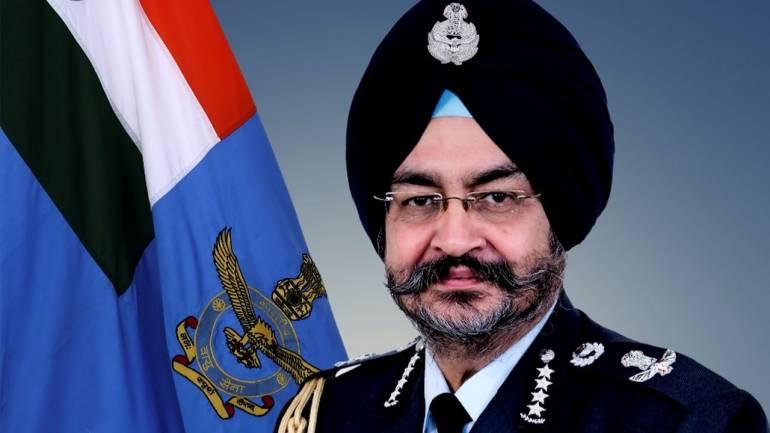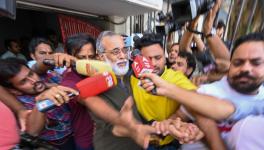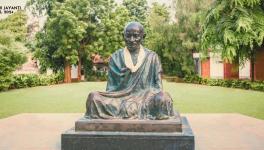Are Indian Armed Forces Turning Partisan

Air Force Chief Birender Singh Dhanoa. I Image Courtesy: Money Control
Air Force chief Birender Singh Dhanoa recently claimed that Pakistan’s military leadership has consistently underestimated India’s national leadership. He compared India’s decision to carry out aerial strikes in Balakot, Pakistan on 26 February with the strategic decisions made during past confrontations, such as the Kargil conflict in 1999 and the 1971 and 1965 wars between India and Pakistan.
The Air chief, who is due to retire soon, comes across as partisan when he makes such statements. This is because he equates an aerial strike with wars when the lack of equivalence and proportion between these events is self-evident. He compares the crisis-time leadership of present prime Minister Narendra Modi with the war-time leadership of former prime ministers Atal Bihari Vajpayee, Indira Gandhi and Lal Bahadur Shastri. This, coming on the back of a false equivalence, also comes across as partisan.
Earlier, the Air chief had claimed that the lack of Rafale jets was the reason why India could not wallop Pakistan for the retaliatory airstrikes it launched on 27 February at Naushera-Rajauri along the Line of Control or LoC, the day after India struck at Balakot. The implication of his remark is that while previous governments dilly-dallied in procuring the jets from Rafale, Modi had fast-forwarded this process during his visit to Paris in 2015. The Air chief’s remarks came in the midst of a controversy over alleged procedural shenanigans in the new Rafale deal. This makes him sound even more one-sided.
Dhanoa’s remarks can be considered partisan because, every time, they favour the ruling party. Take for instance his attempt to falsify history when he said that Pakistan’s counter strike did not venture across the LoC. This contradicted even the Indian government’s statements on air intrusions on 27 February.
The Air chief’s indulgences are nevertheless comparatively fewer than the rather brazen utterances of the Army chief, which have peppered his tenure. Perhaps Bipin Rawat was emboldened by the new process of “deep selection” and his rumoured affinity—noted by a scribe—with the reigning security deity, National Security Adviser (NSA) Ajit Doval. In any case, this pair has set a new atypical benchmark of military subservience in India’s civil-military relations.
Seen in this light, three distinct possibilities illustrate the future direction of civil-military relations in India. The first possibility is banal: The Prime Minister has announced the creation of the position of a chief of defence staff (CDS) from the ramparts of the Red Fort. However, nobody has been named for the position or appointed so far. The CDS position is, at least in theory, still up for grabs. From the positions taken by the two chiefs over the last few months, a competition between the forces for this position can be deduced without much difficulty.
The Army chief is perhaps on a better wicket for the CDS post, for he has broadcast his political pliability more vocally, be it over Kashmir, Pakistan, internal security and, in one memorable instance, on domestic politics in Assam. The Air Chief perhaps also fancied his chances—maybe he believed that the first CDS from the Air Force would make it easier to get the Air Force to fall in line with the very idea of a CDS position—an idea that the Air Force has not quite accepted.
It is well known that this regime uses its discretion to place heads of institutions, which in turn enables it to manipulate agencies and institutions. This is one way in which it has damaged institutional health across the board since 2014. Powerful positions have always enticed those who are accustomed to holding power and enjoying its perks. For the retiring military brass, governorships are also highly-valued sinecures. Now, the Air chief has a week to go before retirement and—who knows—he may yet be recalled to take up the CDS job, as was Maxwell Taylor in the United States.
The second likely explanation for the outspokenness of military chiefs is information war. The new Army doctrine is that a hybrid war substitutes for peacetime in today’s age. Since Pakistan keeps up its proxy war, a hybrid war is ever-ongoing. The leading characteristic of such a war is information war. This requires the military to keep up the din of impending war. This explains why the Army chief let on recently that aggression induces fear and thereby deters Pakistan.
Such deterrence is essential today. Modi is all set to address the United Nations General Assembly session and a crisis at home at this point would be embarrassing, in particular if it is sparked off by Pakistan, which could set off domestic unrest in Kashmir. There are widespread expectations that disaffection is yet to burst forth in Kashmir: India would therefore like to stay Pakistan’s hand and deterrence is useful on this score.
The Air chief’s statement is thus part of an orchestrated move emanating from the national security establishment. This is why, of late, the defence minister, the minister in the Prime Minister’s Office, the Army Chief, etc have made a series of statements on Pakistan-Occupied Kashmir (PoK), hinting at India and the Indian Army’s readiness to grab it. The Air chief’s statement points towards the new doctrine of strategic pro-activism, deployed so that Pakistan is not left guessing. He has been joined by the defence minister, who yesterday reminded Pakistan not to forget its earlier drubbings in war.
That said, it is also possible that the Air chief’s public statements are an effort to counter the criticism levelled by strategic minds (such as Manoj Joshi) who have punctured the hype around the Balakot strike. Such experts did not find the strategic thinking behind Pulwama of the same order as displayed by India during previous wars.
In the last few years, several times, military men have indulged in public punch-ups, for example, over whether surgical strikes ever took place prior to 2014. The Northern Army Commander Ranbir Singh, who is in line for Army Chief, twice denied they took place, contradicting his own predecessor. The first time around, this controversy played out well before the elections and the attack in Pulwama or the Indian strike at Balakot. Egregiously, the debate resurfaced yet again at election time by the operations branch, backed by the northern army commander, denying the earlier surgical strikes.
Given this election time backdrop and Hooda’s writing of a security doctrine for the Congress party, it was clearly political partisanship on display by the uniformed side in the debate, whether it was voluntarily or not.
The Air chief, perhaps mistakenly believing that the dare-devilry in Balakot during his term was being put down, has waded in now to take up the cudgel with Joshi. According to Dhanoa, the Pakistanis conducted the Pulwama attack for they believed that India would be cowed. In fact, from the nearly real-time counter-strike by the Pakistanis, it is evident that they were pretty much awaiting such a knee-jerk response from India, in line with its new-fangled surgical strike policy.
This puts a question mark over India’s new policy of ‘mowing the grass’— periodically clobbering Pakistan for terror provocations. The next time there is a similar attack by Pakistan-sponsored terrorists, the onus would be on India to escalate the matter, since Pakistan can be expected to strike back. The Army chief has hinted as much, saying that the next time India may go beyond Balakot.
In the last crisis, after the dogfight at Naushera-Rajauri, India took recourse to an information war. It claimed to have shot down an F-16 fighter jet for the loss of its own fighter aircraft. This cover-up did not work too well and cannot be expected to work yet another time. India may well have to follow through with missile strikes, which it refrained from doing after Pulwama-Balakot-Naushera. Possible consequences bring into question the new policy.
It is no wonder then that in order to escape a commitment trap India has forged for itself through its statements, it hopes to deter Pakistani provocation in the first place through an information war. Viewed less kindly, it is likely that the different chiefs of armed forces are being used by political minders—especially the NSA—to take the party line of a ‘New India’, aggressive and muscular, which has shown Pakistan its place.
More important is the third possibility: a shift in India’s civil-military relations (CMR). This shift can be imagined as an interplay between three circles, each denoting political culture, strategic culture and the military’s organisational culture.
There are two visualisations of this: In the first, organisational culture is detached from political culture by an intermediary strategic culture. Imagine concentric circles, in which strategic culture is sandwiched between organisational culture at the core and the outer circle is political culture.
Here, as political culture changes so do strategic culture and in turn organisational culture. At present, the ascent to power of cultural nationalism is changing the political culture. In turn, strategic culture is acquiring a muscular strategic orientation. This is impacting the military’s organisational culture, which has cast aside strategic restraint in favour of strategic pro-activism.
The second visualisation of the three as overlapping circles is closer to reality. Here, the political culture is impacting the military’s organisational culture more directly. This is happening through the penetration of cultural nationalism verities into organisational culture. There are two conduits through which this is taking place: the appointment of pliable generals and an ideational conveyor-belt that is being led by military veterans.
Many retired military men joined the Bharatiya Janata Party, the prime minister’s party. Modi’s first rally in 2014 in the run-up to that year’s Lok Sabha elections was before a gathering of retired soldiers and officers. Slowly, the apolitical and secular nature of the military organisation has been changed. This explains the service chief’s partisan behaviour and its uncritical acceptance within the service and in the strategic and veteran communities.
The military’s partisanship—of which the Air chief’s recent intervention is an illustration—is on account of all three explanations. There is the mundane, individual motivation, the functional explanation which allows the military some slack and the more sophisticated one which requires closer tracking of the military’s behaviour in future in order to verify if indeed the ground has shifted in India’s civil-military ties.
Ali Ahmed is visiting professor at the Nelson Mandela Centre for Peace and Conflict Resolution, Jamia Millia Islamia. Views are personal.
Get the latest reports & analysis with people's perspective on Protests, movements & deep analytical videos, discussions of the current affairs in your Telegram app. Subscribe to NewsClick's Telegram channel & get Real-Time updates on stories, as they get published on our website.























